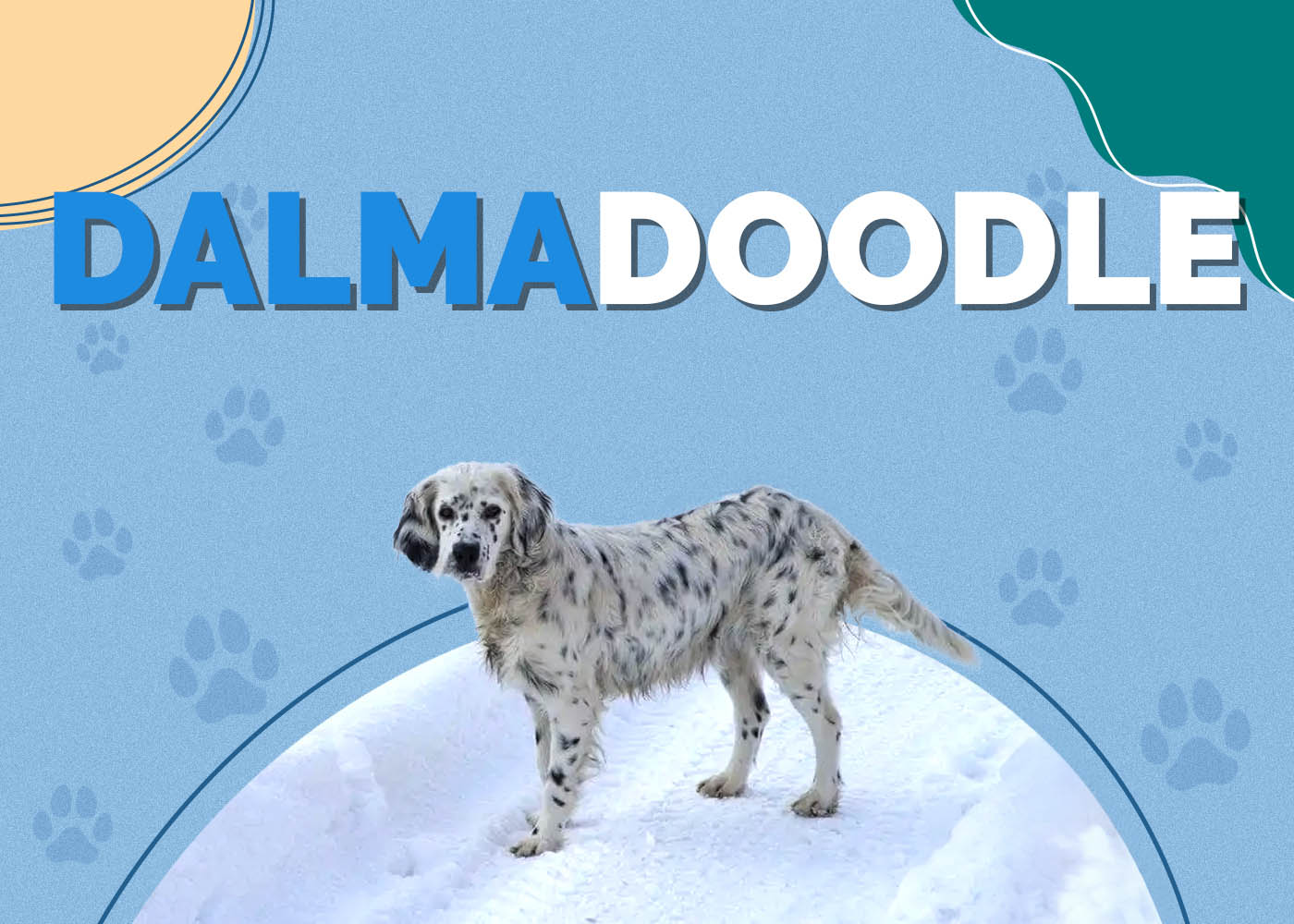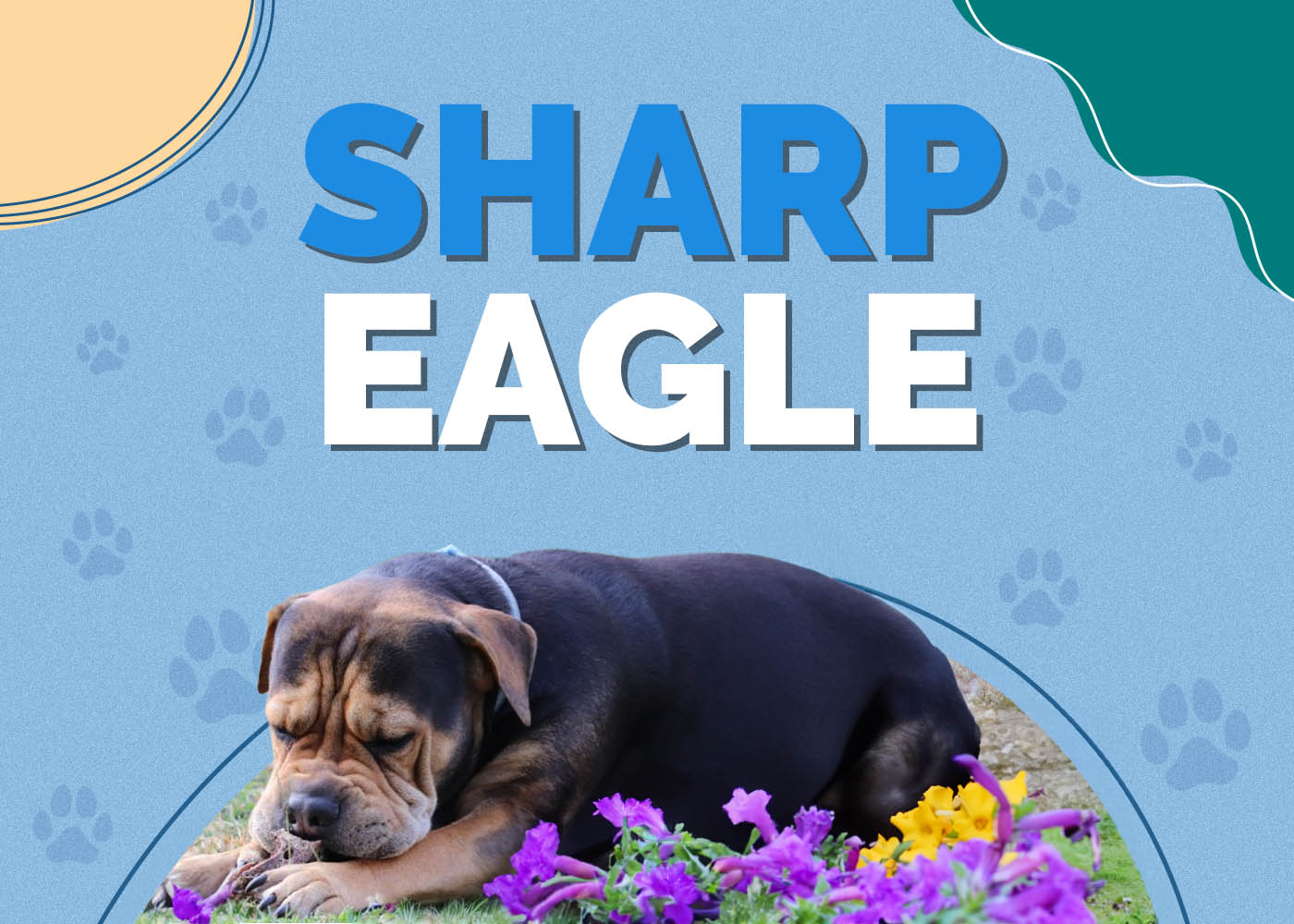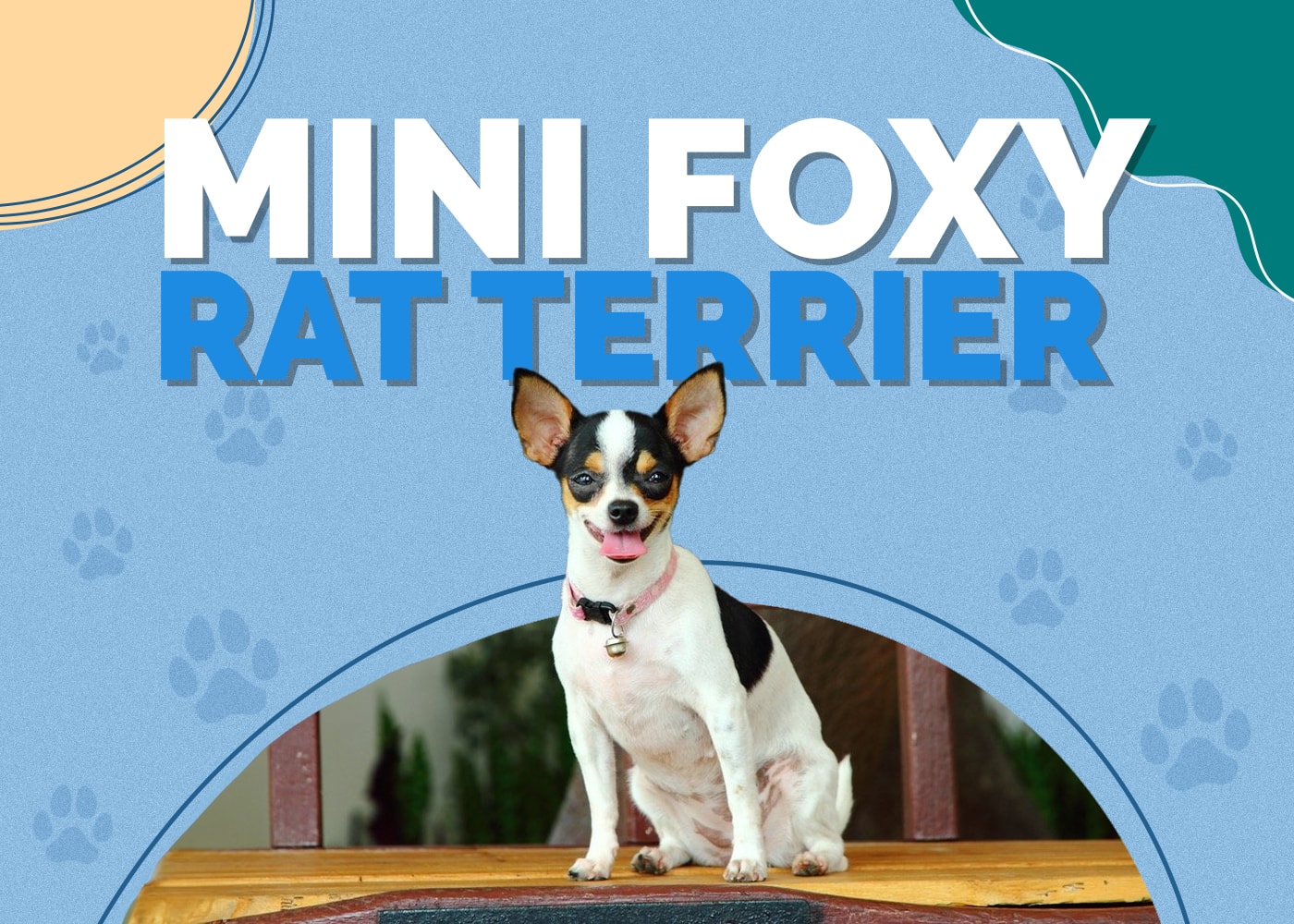Golden Indian Dog: Info, Pictures, Characteristics & Facts

Updated on
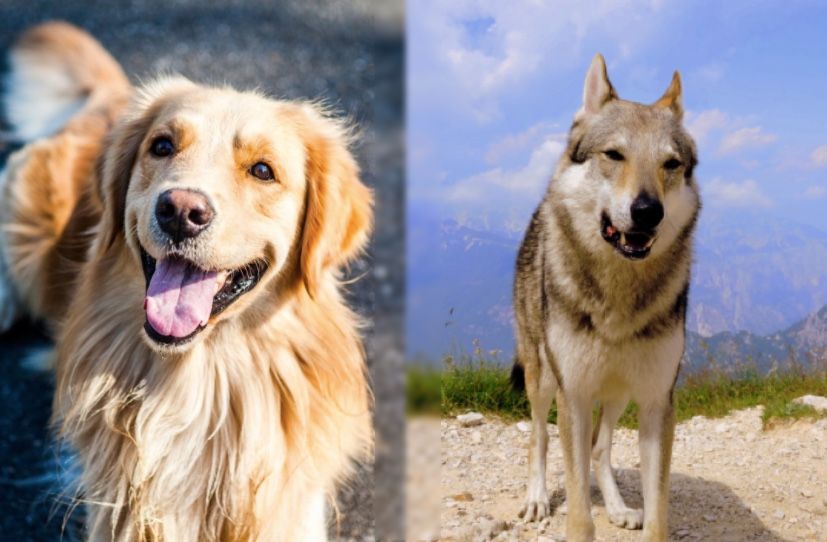
| Height: | 23 – 34 inches |
| Weight: | 55 – 120 pounds |
| Lifespan: | 12 – 14 years |
| Colors: | Brown, tan, golden, black |
| Suitable for: | Families, watchdog duties |
| Temperament: | Calm, friendly, docile, intelligent, playful, social |
The Golden Indian Dog is a hybrid breed, a cross between the lovable Golden Retriever and the energetic Native American Indian dog. The result is a calm, loving, and loyal dog that prefers to be near their owner. The breed is fairly recent and is believed to have been developed in order to create a healthier version of the Golden Retriever, which is prone to several genetic disorders. A quick look at the parent breeds of the Golden Indian will help provide further insight into this unique pooch.
Golden Retrievers are sweet-natured and loving dogs, making them one of the most popular breeds in the U.S., consistently being among the top five in their rankings. These dogs are the quintessential companion breed, being easy to train, non-aggressive, affectionate, and playful. The Golden was originally bred to be a bird dog, retrieving ducks and other waterfowl for hunting. They are driven dogs that thrive when given a job to do, and they excel at agility competitions.
Native American Indians come in two distinct sizes, coat lengths, and color variations. The tortoiseshell variety is rare and considered sacred animals by the Native Americans. These wolf-like dogs are extremely intelligent, with gentle and loving natures, and are becoming more popular as pets. Some breeders believe that this dog’s ancestry dates back centuries, but it is widely acknowledged that the native dogs of the American Indians are now extinct. The modern Native American Indian Dog has been recreated with careful breeding based on historical documentation of the original native breed.
These two parent breeds make for a beautiful and rare hybrid breed. With so few in existence today, count yourself extremely fortunate to find one. With so little known about this new crossbreed, we put together this in-depth guide to help you learn more.
Golden Indian Puppies
The Golden Indian can appear in a wide variety of colors and sizes, due to the variations in the parent breeds. They can be medium to large-sized dogs, with either long, fluffy coats or more Retriever-like coats. The colors can vary too, from solid black or golden to a mixture of both. They can appear strikingly wolf-like at times, with deep grey and white coats and dense, thick fur. The main distinguishing features of the breed are their powerful, muscular bodies, large erect triangular ears, and dark eyes.
Before you buy one of these regal pooches, it is important to consider the massive responsibility you are undertaking. These are large, powerful animals that will need a firm hand to train and a large space to live in. They will require a great deal of dedicated training and exercise, and their needs will take up a good several hours of your day for 12-14 years.
Of course, it is well worth it in the end, as these beautiful dogs are a sight to behold and will become your best friend and loyal protector in no time at all.
3 Little-Known Facts About the Golden Indian
1. Golden Indians are supremely intelligent.
Golden Retrievers are extremely intelligent, ranking 4th in the world behind only the Border Collie, Poodle, and German Shepherd. So, not only will this breed give you unparalleled love and affection, but they can also make your cup of morning coffee! Perhaps they are not that smart, but they will excel in training and agility exercises.
Native American Indian dogs are also extremely intelligent and have an innate love to please. This makes them particularly easy to train, and they have been used for working in a variety of professions, including as hunting companions, guard dogs, and service animals.
With this high intellect being found in both parents, you can be sure that your Golden Indian will have the intelligence to match most other breeds.
2. They hardly ever bark.
Golden Indians seem to dislike the sound of their own voice, as they will rarely bark. Unless they need to alert their owners of potential problems, they are one of the quietest breeds around, which is a plus for the neighbors! That said, they are alert and intelligent pooches that make great guard dogs, and when they do bark, you’ll be sure that something is going on.
3. They were bred for health.
Golden Indians were bred to offset the health issues commonly found in Golden Retrievers. It seems that it worked, as the breed has virtually no known genetic health disorders.
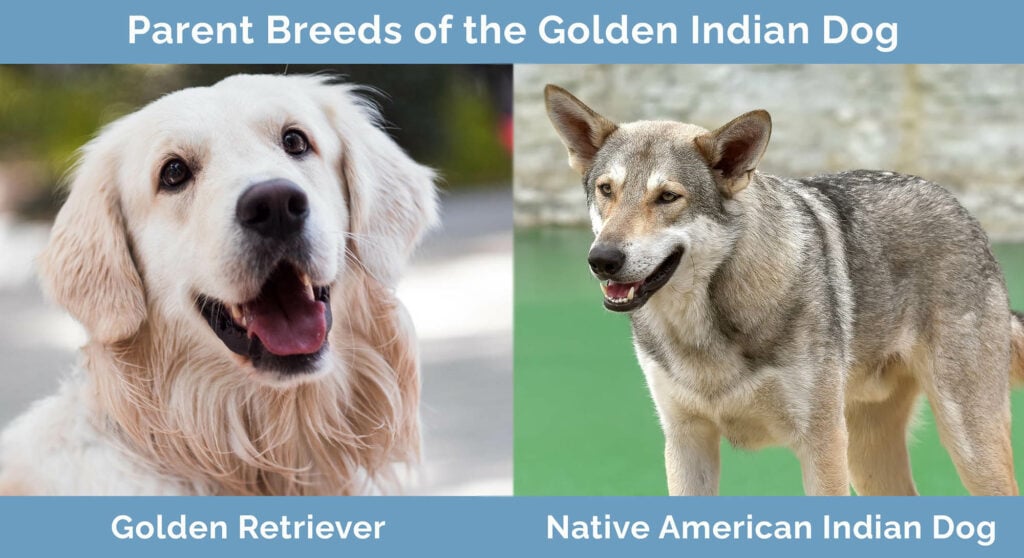
Temperament & Intelligence of the Golden Indian 🧠
Golden Indians are supremely intelligent, intensely playful, and extremely friendly dogs. They can be highly energetic, but in general, they are placid and calm dogs, making them ideal family pets. They love to play and make great companions for kids, provided that they don’t accidentally knock them over!
These dogs are eager to please and consequently, are notoriously easy to train. They will excel at agility sports and competitions and are often used as service animals. They inherit this mellow temperament from their Golden Retriever roots and have a similar outlook on life.
While Golden Indians are docile and mellow animals that don’t bark unnecessarily, they are no slouch when it comes to protecting their family. They are highly alert animals that make great guard dogs.
Are These Dogs Good for Families? 🧠
Golden Indians, like both the Golden Retriever and Native American Indian Dog, make great family dogs. There is arguably no more loyal, docile, and friendly breed. They are great with children, as gentle as they come, and are seldom aggressive unless they are in protection mode. One point to bear in mind is that these dogs bond strongly with their owners. They do not enjoy being left alone and will suffer from separation anxiety when left alone for extended periods.
Does This Breed Get Along with Other Pets? 🐶 😽
Golden Indians generally get along fine with other family pets, but they do have a fairly strong prey instinct that you’ll need to keep an eye on. That being said, the intelligence and eagerness to please in these dogs make this trait easy to train out of them.
Things to Know When Owning a Golden Indian
Food & Diet Requirements 🦴
Golden Indians can vary fairly widely in size and weight, and how much food they need will depend on the size of your dog. We recommend a protein-rich diet from high-quality kibble, with lean meats thrown in from time to time. No matter the food that you choose to feed your pooch, it is best to divide meals into two separate ones. This will assist their energy levels and metabolism greatly and keep them going throughout the day.
These dogs will need between 2 and 4 cups of dry kibble a day, depending on their size, and they should not be freely fed, to prevent them from getting overweight. Most Golden Indians have thick and silky coats, and essential omega fatty acids are an important part of their daily diet to keep this coat looking and feeling good. The best source of these fatty acids is fish or fish oil or omega-rich seeds, such as flax seeds.
Exercise 🐕
Golden Indians have moderate energy levels and are fairly laidback pooches, but like all dogs, they need regular daily exercise to stay happy and healthy. A minimum of 1-2 hours a day will suit this breed fine and should ideally be split into two sessions. Fortunately, these dogs love to play, and a brisk walk or jog followed by agility training or ball games is a great way to keep them both entertained and give them the essential activity that they need.
Bear in mind that because these dogs have such high intellect, they will thrive when given a specific job to do. A run or jog every day is the minimum activity requirement for these pooches, but they’ll also need a great deal of mental stimulation. This can come in many forms, but they’ll love it most in the form of regular training sessions.
Training 🦮
Golden Indians are notoriously easy to train, just like their parent breeds. These dogs love to please and love to play, and training combines these two. Of course, the earlier that you begin training, the better. Training can begin from the first day you bring your pooch home, with simple and concise commands. Getting your pooch to sit is the easiest place to start, as the command can be used at many different times and incorporated into their daily life. Plus, you’ll be using this command a ton with these spirited pooches!
We recommend positive reinforcement training with Golden Indians. This is because they are sensitive dogs that will learn far quicker by being rewarded for good behavior than being punished for bad behavior — remember, these dogs love to please!
Grooming ✂️
The Golden Indians coat can vary in length and thickness, but no matter the variation, you can be sure that they’ll need daily brushing. Golden Indians are heavy shedders, especially at the end of winter, and daily brushing will help pick up loose dead hair and prevent any matting and knotting.
Other than that, regular teeth brushing will keep their teeth free from plaque build-up and dental disease, and they may need the occasional nail trimming too. Active dogs like Golden Indians typically wear their nails down through activity and exercise, but it’s still a good idea to keep an eye on them. Long nails can break easily and cause your pooch serious pain.
Health Conditions ❤️
Golden Indians were specifically bred as a robust and healthy breed, and it seems the breeders succeeded. There are no known genetic disorders found in the breed — yet. Remember that this is still a new and relatively rare breed.
That being said, the only occasional disorder seen in these pooches is hip dysplasia, and it is rare. As long as your Golden does not get overweight, this rarely a problem. Of course, these dogs can still be afflicted by common viruses that affect canines, but provided that they get their required shots, this is a mild issue.
- Bloat
- Obesity
- Allergies
- Hip dysplasia
Male vs Female
Is the Golden Indian the breed for you? The last decision to make is whether to bring home a male or female. This may seem like an important decision, but in our experience, there is little difference between the sexes. The decision that you make is one of personal preference, especially if this will be your only dog. If you already own dogs, you may consider getting a Golden of the opposite sex from the pooches you already have. Same-sex animals can sometimes have issues with dominance, especially in males, but this is largely mitigated by neutering or spaying.
Bear in mind that every dog is a unique individual. How your Golden Indian is raised and trained will affect their personality far more than gender.
Final Thoughts:
Golden Indians are a rare and truly unique breed. There is arguably no breed that is more loving, gentle, or calm, making them ideal family pets. They are rarely aggressive but can switch to protection mode quickly should the need arise, making them great guard dogs. These dogs are a sight to behold, and you are sure to turn heads when on daily walks with this beautiful, wolf-like breed. Plus, there are no known genetic disorders in these dogs, making them one of the healthiest on the planet!
The Golden Indian is the quintessential family dog, second only to the Golden Retriever. If you are looking for a loyal best friend and companion for your family, the Golden Indian is a great choice.
- See also: 11 Indian Dog Breeds (With Pictures)
Featured Image Credit: Pxhere



